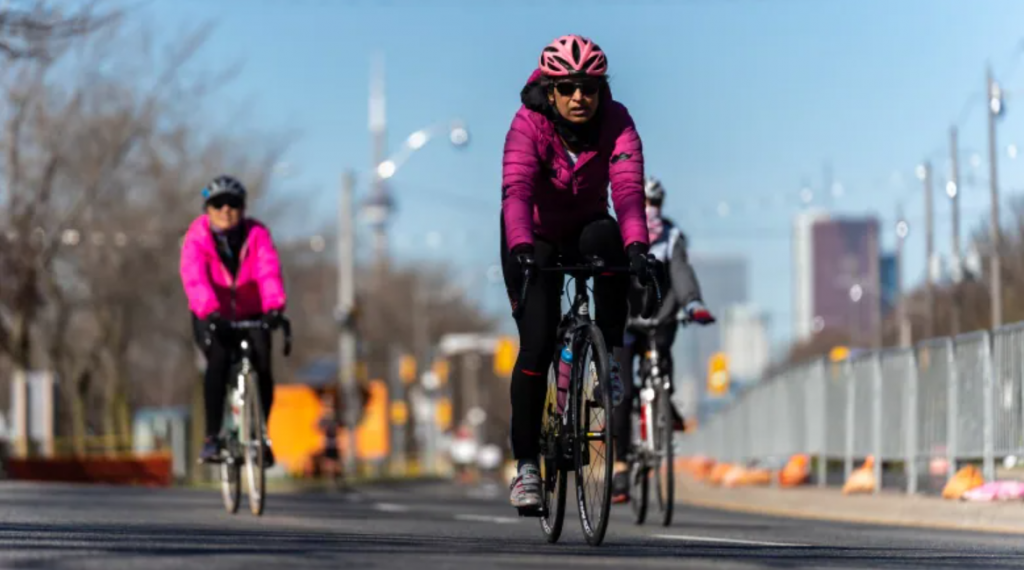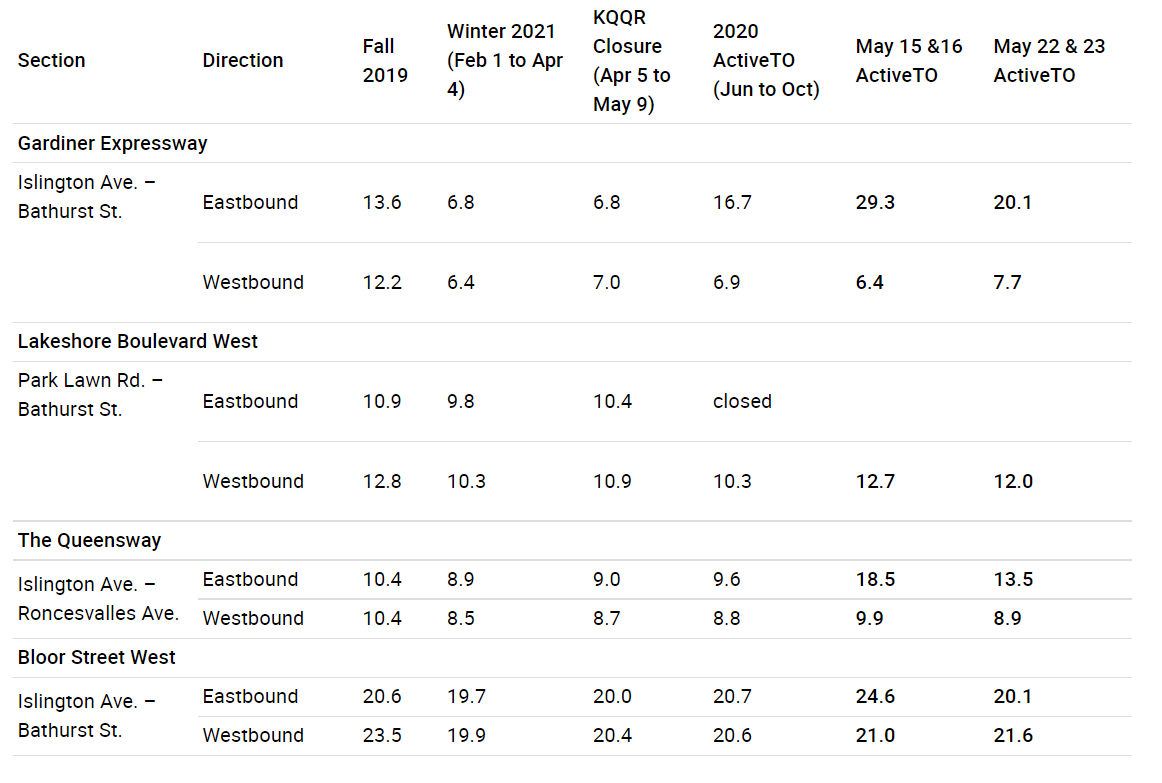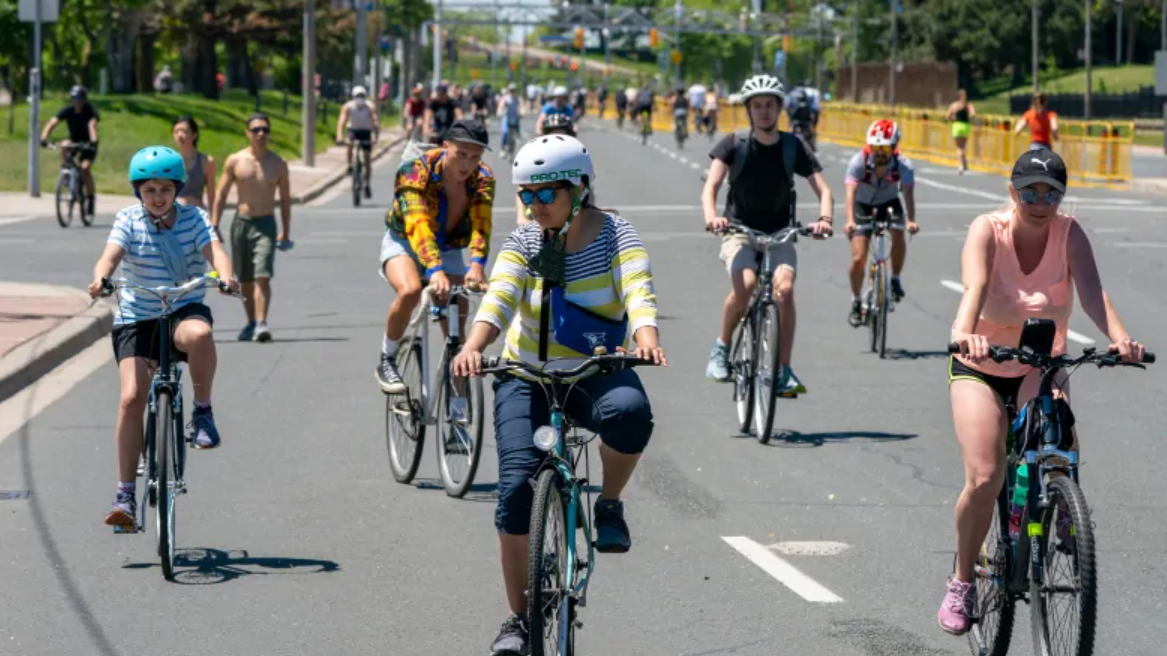City of Toronto to review ActiveTO program over ongoing traffic concerns

Posted June 8, 2022 1:58 pm.
Last Updated June 8, 2022 2:20 pm.
The City of Toronto is contemplating changes to the ActiveTO program amid recent concerns about increased weekend traffic.
ActiveTO was first introduced in 2020 due to COVID-19 restrictions — an outdoor initiative designed to encourage city residents to get out and use the space to their advantage.
Due to the lifting of COVID-19 restrictions, the city is being forced to review the program and consider possible changes.
“Many of the major annual events are returning to Toronto this summer and fall. These events are expected to draw many road users into and around the city,” a spokesperson told CityNews.
“Staff have continued to review ActiveTO on a case-by-case basis as the reopening has been happening.”
The City of Toronto is gathering traffic data from recent ActiveTO closures on Lake Shore West to report to the council later this month.
2021 city street data shows daunting increase in traffic
The ActiveTO programs included major weekend road closures along city trails “to make space for people, alleviate weekend and holiday crowding, and ensure there is room to be physically active and respect physical distancing.”
The most recent set of weekend road closures saw some sections of High Park sealed off to vehicle traffic.
But the perpetual closure of major Toronto routes, including Lake Shore Boulevard West, has had a negative impact on city-wide travel times.

Spring 2021 ActiveTO travel time data courtesy of the City of Toronto.
According to Spring 2021 ActiveTO cycling, pedestrian and traffic data, estimated travel times on the Gardiner Expressway and The Queensway reached almost double and close to triple on ActiveTO weekends compared to regular work days.
The same data observed minimal impacts on travel times on the routes around Allen Road during ActiveTO closures.
The information represents the average travel time in minutes from noon to 7 p.m. across both days.
A spokesperson for Cycle Toronto, a non-profit charity and the city’s largest cycling advocacy organization, says its representatives are “looking to have Lakeshore reimagined to better reflect and accommodate the needs of all people and road users.”
“In its current form, Lakeshore West is a 6-to-8-lane highway designed for cars to drive through it at the expense of those who want to stay and enjoy the western waterfront,” said Cycle Toronto’s Alison Stewart.
“We would like the city to be bold with its vision by designing streets for the traffic patterns we want, not around accommodating the old traffic patterns that have trapped us in an unhealthy, unsustainable and costly loop.”

Cyclists take advantage of the ActiveTO closure of Lakeshore Blvd. in Toronto on June 7, 2020. (Frank Gunn/The Canadian Press).
In December 2021, seven ActiveTO routes first installed in 2020 as a temporary part of Toronto’s COVID-19 pandemic response were made permanent. At the time, city data showed that the number of people cycling on those routes had increased by approximately 65 per cent.
Last year, cycling advocates and other city residents favouring ActiveTO had called on Mayor John Tory and the city to make the program permanent.
On weekends in the summer of 2020, the city estimated more than 26,000 cyclists and 10,000 pedestrians used Lake Shore Boulevard West and East and Bayview Avenue during road closures.
“We need to make our roads safer for people who choose to bike, walk and use other micro-mobility devices,” Stewart said.








